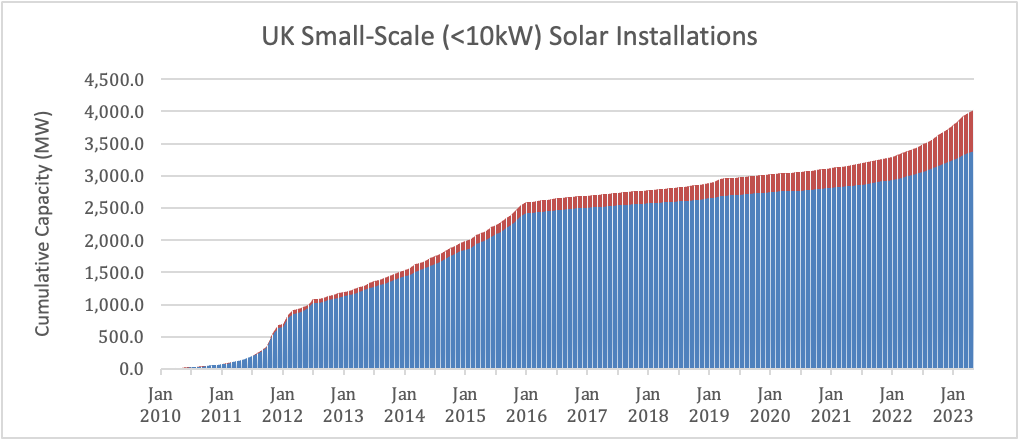 73% of all new UK solar power added in 2022 were from household installations. Image: Unsplash.
73% of all new UK solar power added in 2022 were from household installations. Image: Unsplash.Consultant NTT DATA UK&I has released new data signalling that 73% of all new solar power added to the grid in 2022 were from household installations.
In doing so, the firm has indicated that this means domestic solar panel installations are growing at its fastest rate since 2016. Although this is considered a boon for the UK solar industry, this does come with complications.
Perhaps the most influential challenge this presents is the need for the UK energy grid to transform in order to be able to sustain this projected growth for solar. This is something that had been highlighted by Harmony Energy in an exclusive interview with Solar Power Portal.
NTT DATA UK&I also found that the installation of household solar panels in the UK in 2022 made up 69% of added solar capacity. But what could be stimulating this growth?
Some of the key points NTT highlighted in regards to this stimulation of growth were the ongoing energy crisis, rising electricity costs and falling PV panel and battery costs.
This has been discussed by a number of different solar businesses over the past year. The energy crisis, which had been exasperated by the Russian invasion of Ukraine in February 2023, led to spiralling wholesale gas costs and an almost catastrophe for the UK energy market.
But in light of this, renewable energy emerged as a means to produce cheap energy with the added bonus of also being green. Solar thus saw a thrust into the limelight resulting in a growing interest in installations – something that has been revealed in NTT’s data.
This interest has also been reflected in the rise in cumulative capacity of domestic solar PV installations, which now stands at 4.2GW.

Image: NTT DATA UK&I.
Despite these positives, there are, indeed, shortcomings. As discussed by NTT, due to infrastructural constraints on the number of new generators that can be connected to the grid, a lack of investment in large-scale, industrial solar farms, and a low price average for energy sold back to the grid, it is expected to be a challenge for networks to capture this spike in renewable energy sources.
Alongside this, NTT stated that the Smart Export Guarantee (SEG), which pays homeowners to deliver excess energy back to the grid, only pays around 4.9p/kWh – just over 13% of the September 2022 wholesale price of 37.2p/kWh.
As a result, homeowners with solar PV panels are incentivised to store their excess energy through DERs (batteries) to maximise their investment. Despite the space and expense DERs command, research shows that small-scale residential installations are rising at a rate not seen in seven years.
“Renewed investment in solar installations by homeowners is driving the decentralisation of the energy grid and ramping up the pressure for
distribution system operators (DSO) transformation,” said Eduardo Fernandez, head of gas, power and water at NTT DATA UK&I.
“Our data shows that small installations now make up a quarter of the UK’s national solar capacity, with that figure rising rapidly, which puts pressure on distribution network operators (DSOs) to make drastic changes to their technology stack.
“However, the data shows that homeowners are now paid an average of around 4.9p/kWh to deliver excess electricity back to the grid. Wholesale prices paid by electricity companies are almost 10 times this, and the current energy cap is nine times the price paid. This, along with a limited grid capacity for renewables, often contributes to solar PV owners installing DERs to store excess energy, making energy supply and demand more rigid and inefficient as electricity must be transmitted over greater distances to meet demand.
“Understanding consumer behaviour through data-driven insights like this will be key for energy networks to justify to investors why and where extra investment in grid reinforcement is needed.”
Fernandez concluded: “By helping DSOs to take advantage of this movement and integrate distributed resources: we can maximise the impact of transformative technologies like IoT and intelligent automation to create smarter transmission and distribution networks, turning data from physical assets into actionable insight. This will create a smarter grid: granting greater control and better decision-making through the data provided by smart meters and IoT devices. The data insights show us that small-scale residential has the potential to be a meaningful participant in the National Grid.”